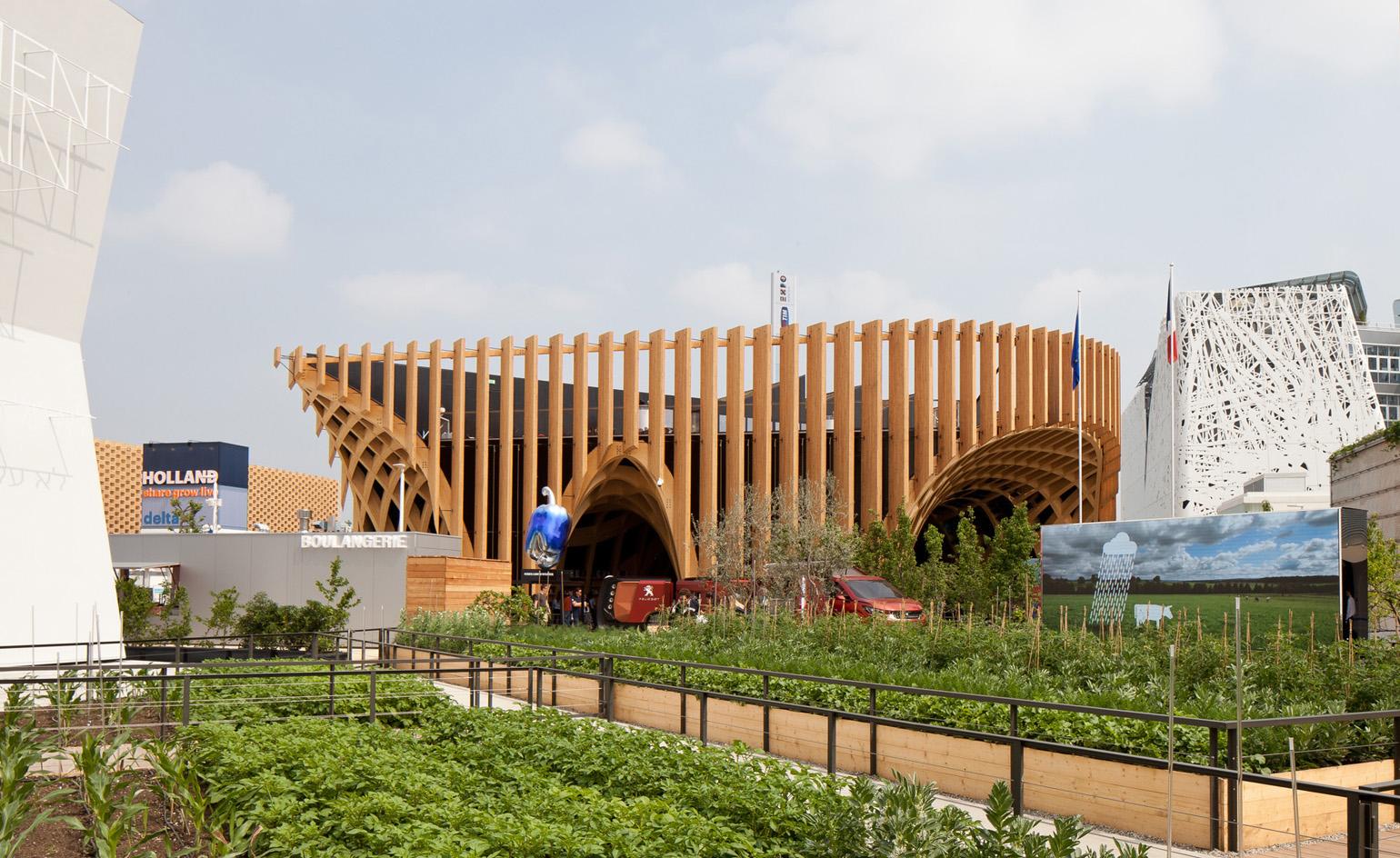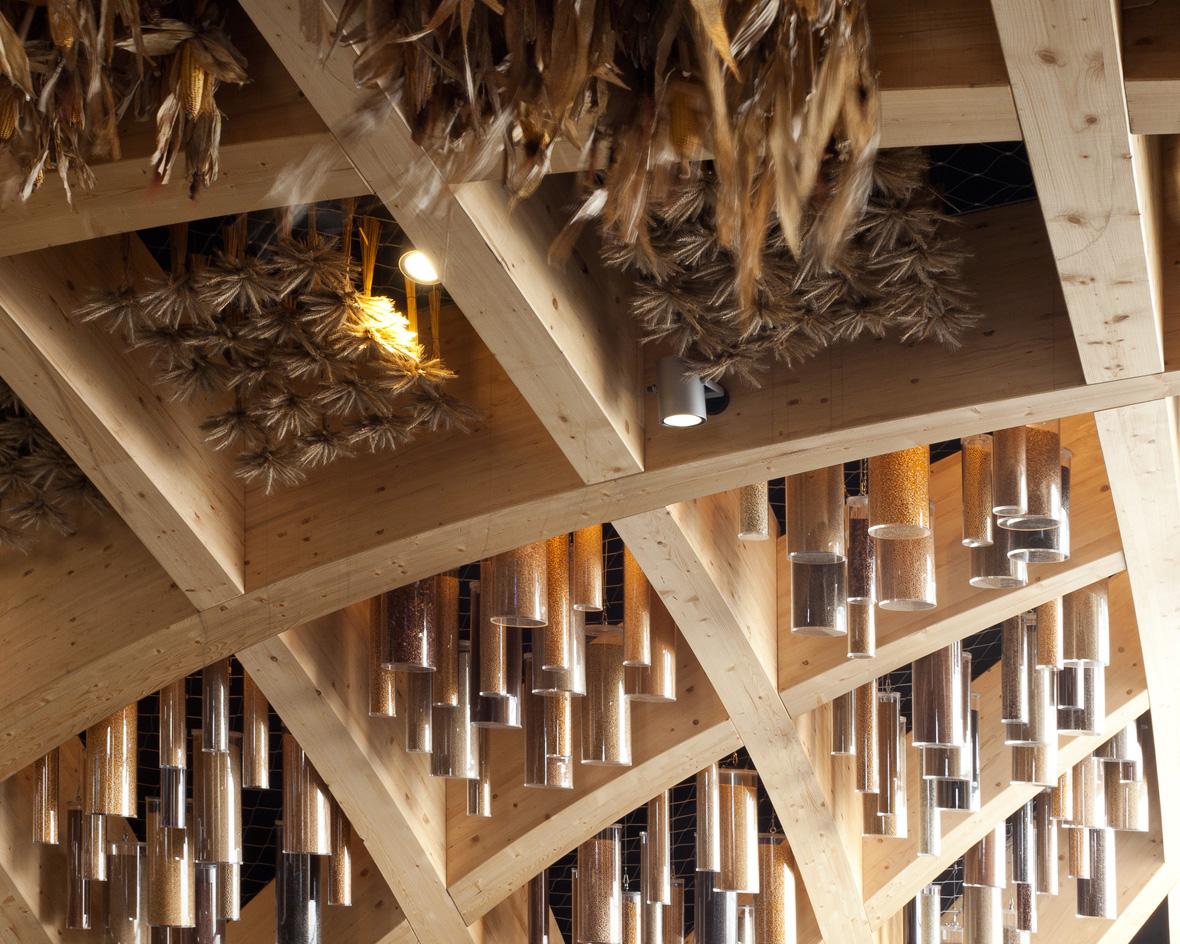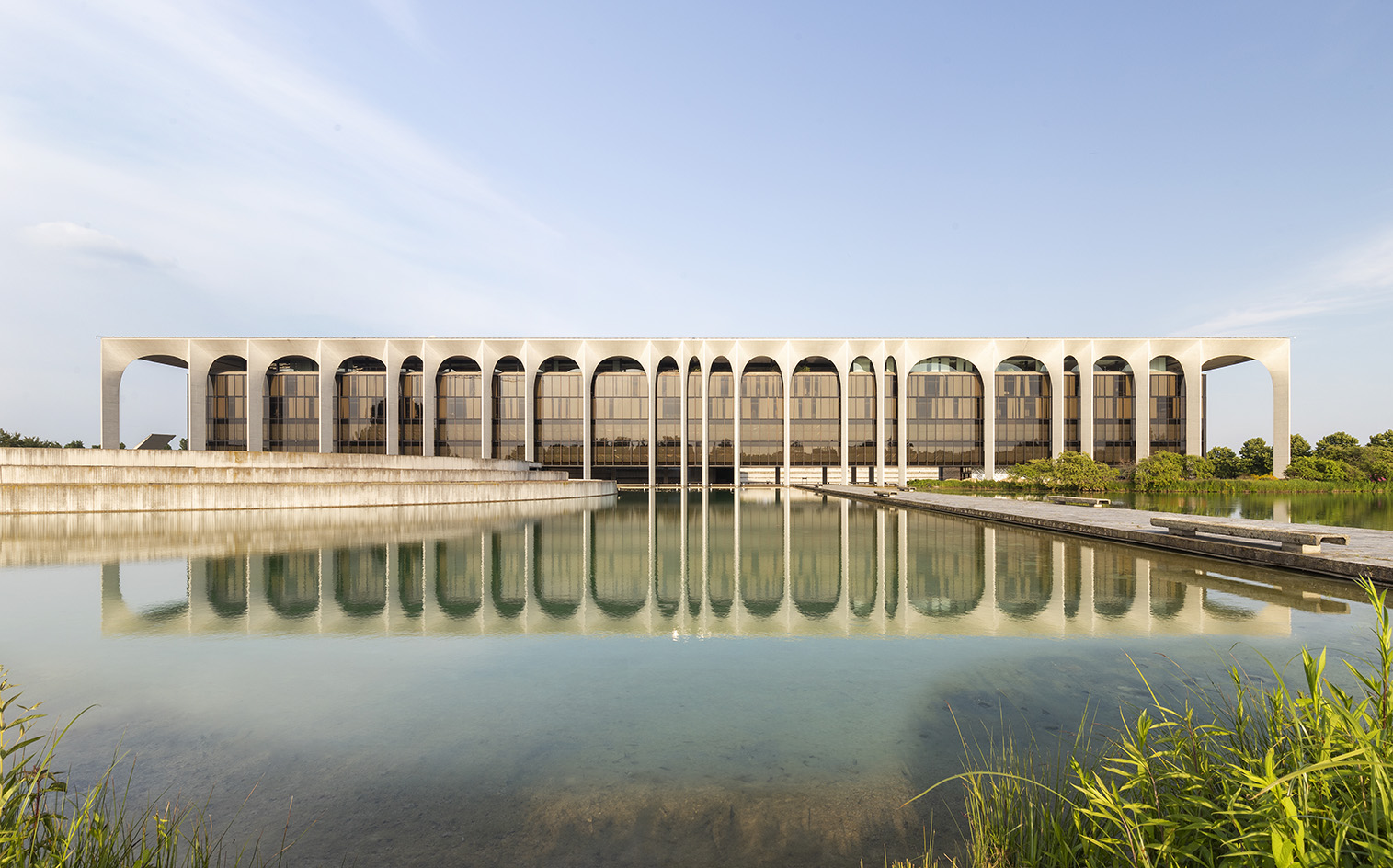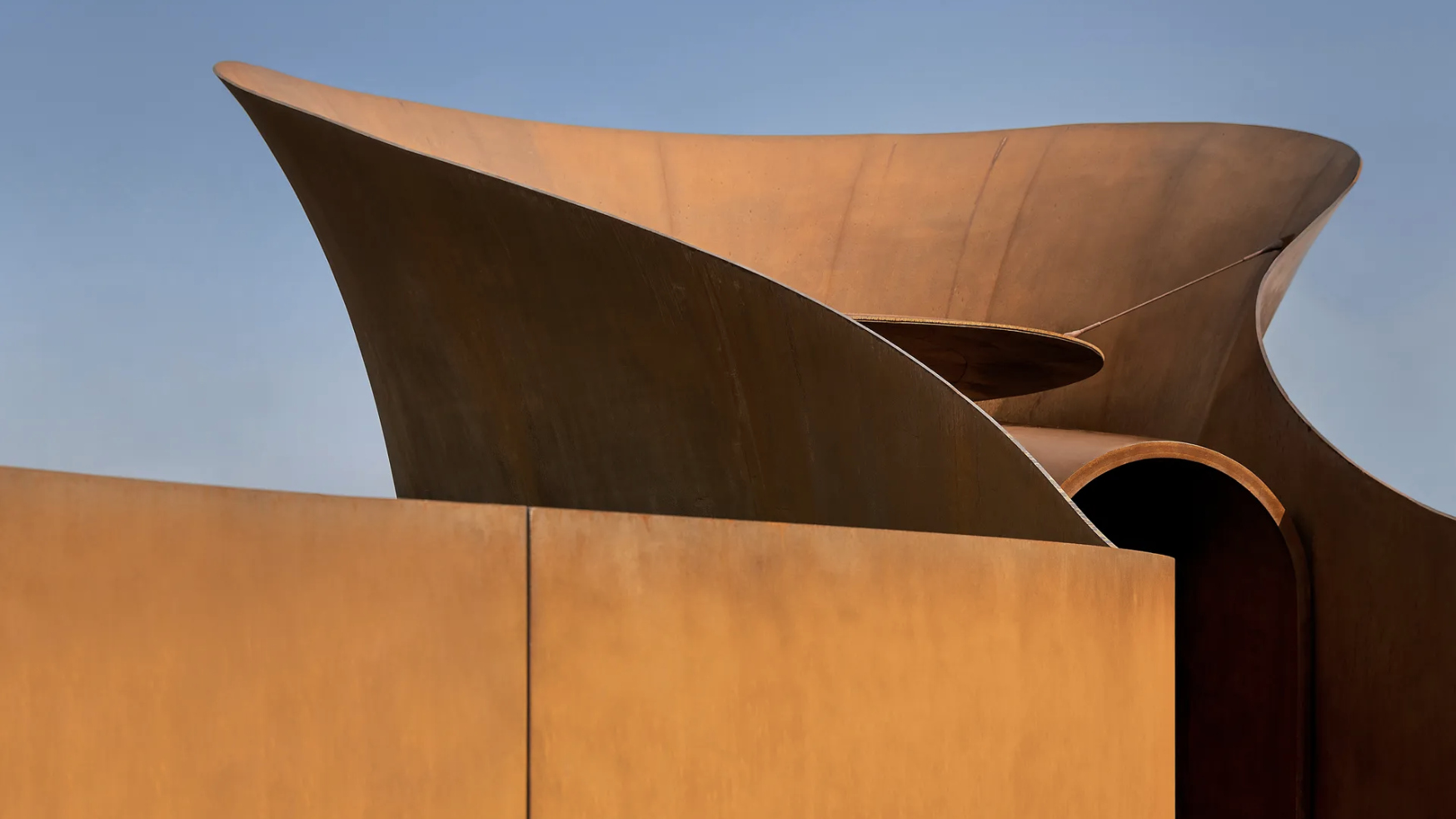Ripple effect: France's undulating Expo pavilion leaves a mark
We revisit France's undulating market-inspired pavilion by Studio X-TU and Atelien Architecture from this year's Milan Expo

After Milan's architectural expo came to a close at the end of last month, just a handful of the many grandstanding designs have managed to etch lasting impressions in our memories. One of which is France's fluid, wooden lattice structure that was conjured by Anouk Legendre of Studio X-TU in collaboration with Atelien Architecture.
Designed to ‘portray the geographic diversity of France’s regions, its unique agricultural offerings and culinary traditions’, the lightweight pavilion consisted of an interlocking, reusable framework of curvy glulam girders and pillars made from French spruce and larch that recall the hills and valleys of its landscape. The pavilion's low energy consumption was aided by a natural cooling and air circulation system while a series of arching entranceways of various sizes ushered visitors within the cavernous space.
Inside, the exhibition's theme, 'Feeding the Planet - Energy for Life', was addressed in the form of a 3,592 sq m covered market conceived by exhibition designer Adeline Rispal. Here, the impressive computer modelled structure became a trellis for climbing plants with edible produce displayed within its recesses. A mezzanine level housed the pavilion's offices and VIP event rooms, while upstairs a full-service restaurant called Café des Chefs served up vegetables grown onsite using hydroponics and seasoned using aromatic herbs from the terrace.
After drawing more than 2.2 million visitors and receiving a prize for best architecture and landscape by the Bureau International des Expositions, the pavilion has served its purpose, but its life is by no means over. Due to the fact that X-TU made the design fully reusable, we will be eagerly awaiting the announcement of its next incarnation in the not-so-distant future.

The lightweight pavilion consisted of an interlocking, reusable framework of curvy glulam girders and pillars made from French spruce and larch that recall the hills and valleys of the country's landscape.

A series of arching entranceways of various sizes ushered visitors within the cavernous space.

The architects used a computer modelling programme to design and build all of the interlocking wooden components, which were then cut using a digitally controlled robot.

The pavilion's low energy heating suction system situated in the central skylight was aided by a natural cooling and air circulation.

The exhibition's theme, 'Feeding the Planet - Energy for Life', was addressed inside in the form of a 3,592 sq m covered market conceived by exhibition designer Adeline Rispal. Here, the impressive structure became a trellis for climbing plants with edible produce displayed within its recesses.
INFORMATION
For more information visit the French Pavilion website
Receive our daily digest of inspiration, escapism and design stories from around the world direct to your inbox.
Ali Morris is a UK-based editor, writer and creative consultant specialising in design, interiors and architecture. In her 16 years as a design writer, Ali has travelled the world, crafting articles about creative projects, products, places and people for titles such as Dezeen, Wallpaper* and Kinfolk.
-
 A tale of two Audis: the A5 saloon goes up against the A6 Avant e-tron
A tale of two Audis: the A5 saloon goes up against the A6 Avant e-tronIs the sun setting on Audi’s ICE era, or does the company’s e-tron technology still need to improve?
-
 Inside Christian de Portzamparc’s showstopping House of Dior Beijing: ‘sculptural, structural, alive’
Inside Christian de Portzamparc’s showstopping House of Dior Beijing: ‘sculptural, structural, alive’Daven Wu travels to Beijing to discover Dior’s dramatic new store, a vast temple to fashion that translates haute couture into architectural form
-
 A music player for the mindful, Sleevenote shuns streaming in favour of focused listening
A music player for the mindful, Sleevenote shuns streaming in favour of focused listeningDevised by musician Tom Vek, Sleevenote is a new music player that places artist intent and the lost art of record collecting at the forefront of the experience
-
 Modernist Palazzo Mondadori’s workspace gets a playful Carlo Ratti refresh
Modernist Palazzo Mondadori’s workspace gets a playful Carlo Ratti refreshArchitect Carlo Ratti reimagines the offices in Palazzo Mondadori, the seminal work by Brazilian master Oscar Niemeyer in Milan
-
 Wang Shu and Lu Wenyu to curate the 2027 Venice Architecture Biennale
Wang Shu and Lu Wenyu to curate the 2027 Venice Architecture BiennaleChinese architects Wang Shu and Lu Wenyu have been revealed as the curators of the 2027 Venice Architecture Biennale
-
 At the Holcim Foundation Forum and its Grand Prizes, sustainability is both urgent and hopeful
At the Holcim Foundation Forum and its Grand Prizes, sustainability is both urgent and hopefulThe Holcim Foundation Forum just took place in Venice, culminating in the announcement of the organisation's Grand Prizes, the projects especially honoured among 20 previously announced winning designs
-
 Carlo Ratti reflects on his bold Venice Architecture Biennale as it closes this weekend
Carlo Ratti reflects on his bold Venice Architecture Biennale as it closes this weekendThe Venice Architecture Biennale opens with excitement and fanfare every two years; as the 2025 edition draws to a close, we take stock with its curator Carlo Ratti and ask him, what next?
-
 A Chilean pavilion cuts a small yet dramatic figure in a snowy, forested site
A Chilean pavilion cuts a small yet dramatic figure in a snowy, forested siteArchitects Pezo von Ellrichshausen are behind this compact pavilion, its geometric, concrete volume set within a forest in Chile’s Yungay region
-
 Doshi Retreat at the Vitra Campus is both a ‘first’ and a ‘last’ for the great Balkrishna Doshi
Doshi Retreat at the Vitra Campus is both a ‘first’ and a ‘last’ for the great Balkrishna DoshiDoshi Retreat opens at the Vitra campus, honouring the Indian modernist’s enduring legacy and joining the Swiss design company’s existing, fascinating collection of pavilions, displays and gardens
-
 Step inside Casa Moncler, the brand’s sustainable and highly creative Milanese HQ
Step inside Casa Moncler, the brand’s sustainable and highly creative Milanese HQCasa Moncler opens its doors in a masterfully reimagined Milanese industrial site, blending modern minimalism and heritage, courtesy of ACPV Architects Antonio Citterio Patricia Viel
-
 Aldo Frattini Bivouac is a mountain shelter, but not as you know it
Aldo Frattini Bivouac is a mountain shelter, but not as you know itA new mountain shelter on the northern Italian pre-Alp region of Val Seriana, Aldo Frattini Bivouac is an experimental and aesthetically rich, compact piece of architecture